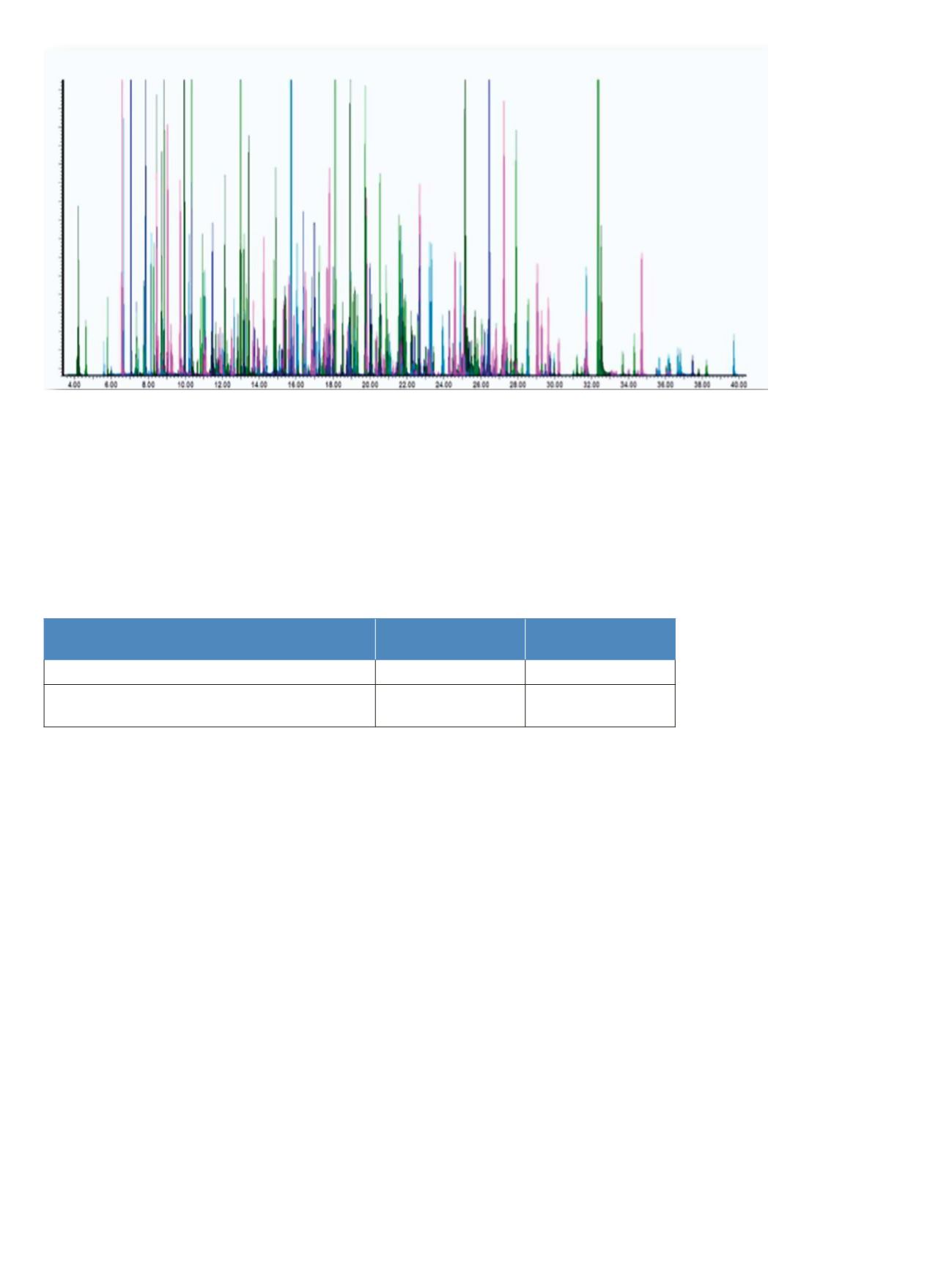

5
by reducing the number of transitions being acquired
simultaneously and the time between when target peaks
elute and when their acquisition window begins or ends.
Figure 6 shows a real-world example of a pesticide
analysis of over 300 compounds using Timed-SRM. As
shown in the Table 1 comparison with Segmented-SRM,
Timed-SRM increases both the sensitivity of the analysis
Figure 6. Real-world acquisition of over 300 pesticides in a single chromatographic run using Timed-SRM.
Segmented-SRM
Timed-SRM
Average number of simultaneous transtions during run
55 Transitions
15 Transitions
Shortest time interval between a compound retnetion time and
an acquisiton window break
5 Seconds
15 Seconds
Table 1. Comparison of Segmented-SRM vs. Timed-SRM for method of over 300 pesticides. Timed-SRM can dramatically reduce the
average number of transitions occurring simultaneously, while increasing the minimum time between an eluting peak and an acquisition
window break.



















